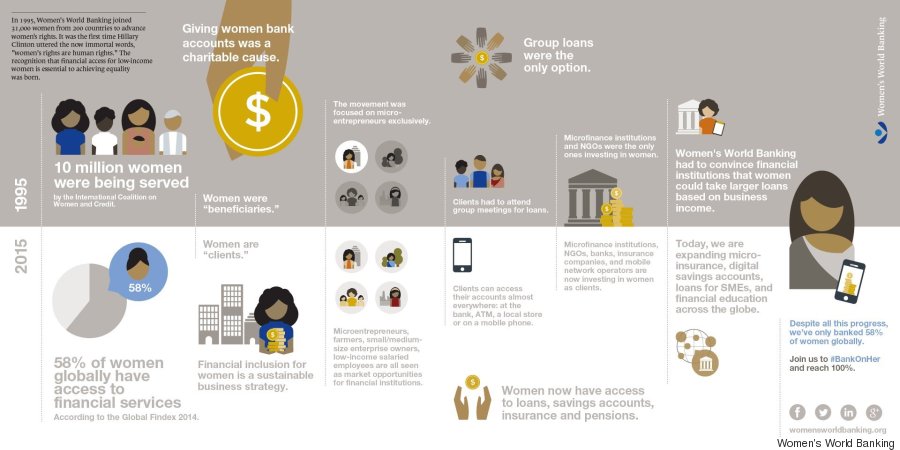September marks the 20th anniversary of the Fourth World Conference on Women held in Beijing, China in 1995. Many remember Hillary Clinton's powerful declaration at this event: "It is time for us to say here in Beijing, and for the world to hear, that it is no longer acceptable to discuss women's rights as separate from human rights." What many people don't know is that it was at that same conference that the most progressive blueprint ever for advancing women's rights was produced: the Beijing Declaration and Platform for Action. And it was in the Beijing Declaration that the importance of women's economic importance was recognized for the first time: a full third of the framework's recommendations dealt with women's economic participation. The platform provided concrete actions to build women's access to financial services. It was the beginning of truly mobilizing the world's financial leaders to build systems that serve the majority of the population -- women.
Over the last 20 years, the industry serving low-income women with financial services has changed dramatically. In 1995, 10 million low-income women were served by nonprofit nongovernmental institutions (NGOs) and microfinance institutions (MFIs). Today more than half of women globally have access to a bank account (Global Findex 2014) through NGOs and MFIs but also through commercial banks, mobile network operators and insurance companies. The industry has also changed the way it talks about women: from "beneficiaries" to valuable "clients" who are essential to a financial institution's growth and sustainability.

Click Here to expand infographic.
The types of financial services that low-income women are able to access have also changed. In 1995, we were still promoting the idea that low-income women entrepreneurs were optimal loan clients. Today, financial institutions are offering savings, microinsurance, digital financial services to rural families, women who work in factories, and women who run larger businesses.
Women's financial inclusion has advanced leaps and bounds since 1995. However, with all of these developments and the support of technology that accelerated financial access on an unprecedented scale, half of all women worldwide still remain outside the formal financial sector, outside full economic opportunity. What will it take to close that gap? Is it progress if women are still being left behind? For Women's World Banking the answer is simple: all of us must bank on her. This means joining new partners and allies, developing new financial tools and services, setting new goals (as the Sustainable Development Goals have done) and -- most importantly -- renewing an international commitment to build on Beijing and achieve full financial inclusion for women.
Women's World Banking is a partner of Cisco CSR. Cisco sponsors The Huffington Post's ImpactX section.